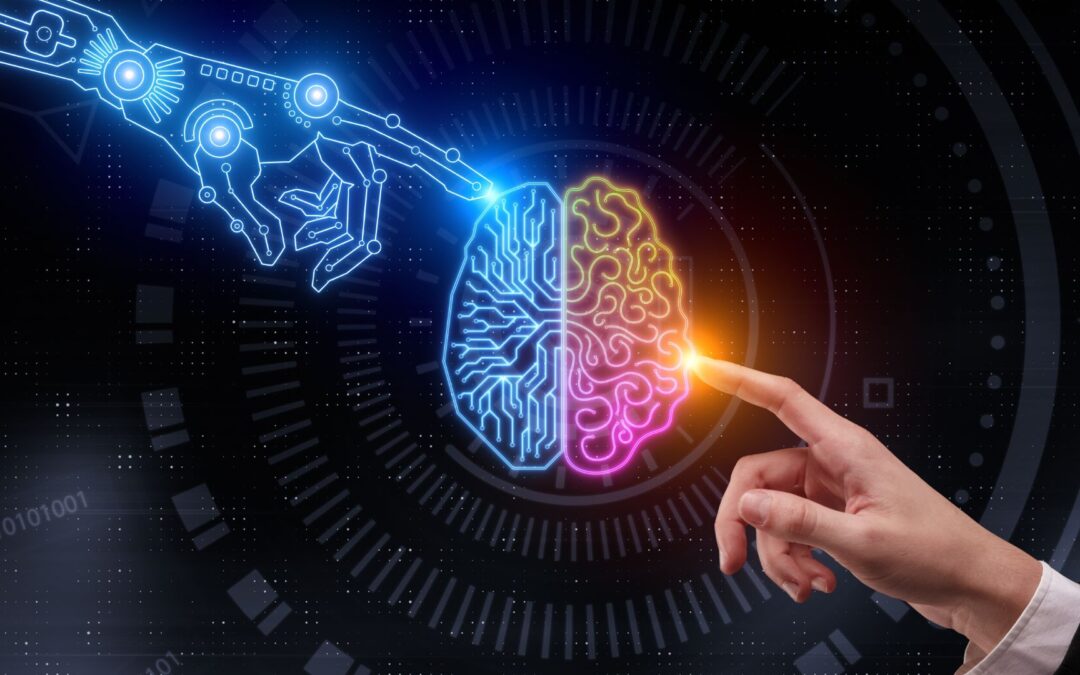- Introduction
- Understanding the Barriers to Education
- Overcoming Barriers and Promoting Equal Opportunities
- Conclusion
- Keywords:
- Key Takeaways
- You Might Still Be Wondering about…
- How does the lack of access to education perpetuate social inequalities?
- What are the long-term consequences of barriers to education on individuals and societies?
- How can technology bridge the gap in educational opportunities between different regions or socioeconomic backgrounds?
- What role can communities and local organizations play in promoting equal access to education?
- How can inclusive education benefit both learners with special needs and the overall educational environment?
- What are some innovative approaches to overcoming economic barriers to education?
- How can curriculum and teaching methods be adapted to cater to the diverse needs of learners?
- What are the potential challenges and benefits of public-private partnerships in education?
- How does education contribute to sustainable development and social progress?
- What are some successful examples of countries or regions that have made significant progress in overcoming barriers to education?
- Common Misconceptions
- Education is only about acquiring academic knowledge and qualifications.
- Education is primarily the responsibility of governments and educational institutions.
- Access to education is solely an issue for developing countries.
- Inclusive education lowers academic standards.
- Investing in education is a cost rather than an investment.
- Online education replaces traditional classroom learning.
- Scholarships and financial aid alone solve the problem of access to education.
- Education is only valuable for individual success and does not contribute to broader societal development.
- Technology in education widens the digital divide.
- Education is a one-size-fits-all approach.
Introduction
Education is a fundamental human right and a cornerstone of sustainable development. It equips individuals with knowledge, skills, and competencies necessary for social, economic, and personal well-being. Despite its acknowledged importance, access to quality education remains a challenge in many parts of the world due to various barriers. Overcoming these barriers and promoting equal opportunities in education are imperative for societal progress. This article delves into these challenges and explores possible solutions.
Understanding the Barriers to Education
Several barriers prevent many individuals worldwide from accessing and benefitting from quality education. These obstacles can be broadly categorized into economic, social, and systemic barriers.
Economic Barriers
Economic barriers include factors like poverty, lack of adequate resources, and economic inequality. These elements limit access to quality education by making it difficult for individuals and families to afford education-related costs. Such costs include school fees, textbooks, uniforms, transportation, and sometimes even the indirect cost of forgoing potential labor income.
In many developing countries, impoverished families may not afford to send all their children to school, leading to a selection process often biased against girls or children with disabilities.
Social Barriers
Social barriers involve cultural norms, attitudes, and behaviors that undermine the value of education or deter certain groups from accessing educational opportunities. For instance, gender discrimination may limit girls’ education in some cultures, and children with disabilities may face stigma and discrimination.
Child labor, early marriages, and language barriers for ethnic minorities or migrants also fall into this category.
Systemic Barriers
Systemic barriers refer to structural issues within the education system itself. These include a shortage of qualified teachers, lack of school infrastructure (such as schools, classrooms, libraries, laboratories), overcrowded classrooms, and inadequate teaching materials. The medium of instruction and curriculum relevance can also be barriers if they do not align with students’ cultural context or future employment opportunities.
Overcoming Barriers and Promoting Equal Opportunities
Addressing these barriers and ensuring equal access to quality education requires concerted efforts from governments, educational institutions, non-governmental organizations, and communities. Here are some strategies to consider:
Investing in Education
Investment in education needs to be a top priority. This includes not only increased government spending on education but also encouraging private sector participation and public-private partnerships. Investment should aim to improve school infrastructure, increase the availability of teaching materials, and ensure adequate teacher training.
Efforts should also be made to alleviate the economic burden on families, such as providing free or subsidized education, offering financial aid or scholarships, or implementing school feeding programs to incentivize enrollment.
Promoting Inclusive Education
Inclusive education is about ensuring that all learners, regardless of their backgrounds or circumstances, can participate and learn in the same environment. This involves adapting the curriculum, teaching methods, and school environment to accommodate the diverse needs of students.
Specific measures can include developing gender-sensitive learning materials, providing disability-friendly school facilities, or offering additional language support for students from minority language groups.
Advocacy and Community Engagement
Changing social norms and attitudes that hinder access to education often requires extensive advocacy and community engagement. It involves raising awareness about the importance of education and challenging discriminatory practices and beliefs.
Community-based programs can be effective in this regard, particularly when they involve key community influencers such as religious leaders, elders, or local government officials.
Leveraging Technology
Technology can play a crucial role in overcoming access barriers. Online learning platforms can reach learners in remote areas or those unable to attend traditional schools due to personal circumstances. Moreover, educational apps or software can offer personalized learning experiences catering to the unique needs of each student.
Conclusion
Access to education is not just a matter of opening school doors for every child. It’s about ensuring that each child can take advantage of the opportunity to learn and grow. Overcoming barriers to education and promoting equal opportunities is a complex task requiring the commitment and collaboration of all stakeholders. Yet, it’s a task worth pursuing, for every step taken brings us closer to a world where everyone, regardless of their circumstances, can realize their full potential through education.
Keywords:
- Access to education: The ability of individuals to enter and benefit from educational opportunities, including factors such as availability, affordability, and inclusivity.
- Barriers to education: Obstacles or challenges that hinder individuals from accessing and receiving quality education, such as economic, social, and systemic factors.
- Equal opportunities: Ensuring that all individuals have an equitable chance to access and benefit from educational opportunities, regardless of their background, gender, socioeconomic status, or abilities.
- Quality education: Education that meets certain standards of excellence, providing learners with the necessary knowledge, skills, and competencies for personal development and societal participation.
- Economic barriers: Obstacles related to financial resources and economic inequality that prevent individuals from accessing education, including costs associated with schooling, materials, and indirect expenses.
- Social barriers: Cultural, societal, and attitudinal factors that limit certain groups’ access to education, such as gender discrimination, stigma, and language barriers.
- Systemic barriers: Structural issues within the education system itself, including insufficient infrastructure, overcrowded classrooms, lack of qualified teachers, and curriculum misalignment.
- Inclusive education: An approach that ensures all learners, regardless of their background or circumstances, can fully participate and learn in the same educational environment, accommodating diverse needs and providing necessary support.
- Advocacy: Actions and efforts aimed at promoting a cause or bringing about social change, including raising awareness, influencing policies, and challenging discriminatory practices.
- Technology in education: The use of technological tools, platforms, and resources to enhance learning, improve access, and personalize educational experiences.
Key Takeaways
- Access to quality education is a fundamental human right and crucial for personal development and societal progress.
- Economic, social, and systemic barriers contribute to unequal access to education.
- Overcoming barriers requires investment in education, inclusive practices, advocacy, and leveraging technology.
- Governments, educational institutions, NGOs, and communities play key roles in promoting equal opportunities in education.
You Might Still Be Wondering about…
How does the lack of access to education perpetuate social inequalities?
Limited access to education can hinder individuals’ social and economic mobility, reinforcing existing inequalities and preventing upward social mobility. It can perpetuate cycles of poverty and limit opportunities for personal and professional growth.
What are the long-term consequences of barriers to education on individuals and societies?
Without access to education, individuals may face reduced employment prospects, lower incomes, limited decision-making power, and decreased overall well-being. Societies may experience slower economic growth, increased social disparities, and missed opportunities for innovation and progress.
How can technology bridge the gap in educational opportunities between different regions or socioeconomic backgrounds?
Technology can provide remote and personalized learning experiences, reaching individuals in underserved areas and those facing physical, economic, or social barriers. Online platforms, educational apps, and digital resources can offer access to educational materials and facilitate interactive learning experiences.
What role can communities and local organizations play in promoting equal access to education?
Communities can raise awareness about the importance of education, challenge discriminatory practices, and support initiatives that address barriers to education. Local organizations can provide scholarships, mentorship programs, and community-based educational opportunities to ensure inclusivity and support for marginalized groups.
How can inclusive education benefit both learners with special needs and the overall educational environment?
Inclusive education creates a supportive and diverse learning environment that celebrates differences and fosters empathy and understanding among students. It promotes equal opportunities for learners with special needs, enhances social cohesion, and prepares all students for a diverse society.
What are some innovative approaches to overcoming economic barriers to education?
Initiatives such as providing free or subsidized education, offering scholarships or financial aid, implementing school feeding programs, and promoting income-generating opportunities for families can help alleviate the economic burden and increase access to education.
How can curriculum and teaching methods be adapted to cater to the diverse needs of learners?
Curriculum adaptation can include incorporating culturally relevant content, addressing multiple learning styles, and providing additional support for learners with different abilities. Teaching methods can involve differentiated instruction, cooperative learning, and individualized support to meet learners’ specific needs.
What are the potential challenges and benefits of public-private partnerships in education?
Public-private partnerships can bring additional resources, expertise, and innovation to the education sector. However, challenges may arise in terms of ensuring equity, maintaining accountability, and avoiding the commercialization of education. Clear regulations and a shared vision of educational goals are essential for successful partnerships.
How does education contribute to sustainable development and social progress?
Education equips individuals with knowledge, skills, and critical thinking abilities necessary to address societal challenges, foster social cohesion, and promote sustainable development. It empowers individuals to make informed decisions, participate in democratic processes, and contribute positively to their communities.
What are some successful examples of countries or regions that have made significant progress in overcoming barriers to education?
Various countries and regions have implemented successful strategies to improve access to education. For example, Finland’s comprehensive educational reforms have resulted in high-quality education for all students. Rwanda’s initiatives to eliminate gender disparities in education have led to increased enrollment and retention rates for girls.
Common Misconceptions
Education is only about acquiring academic knowledge and qualifications.
Reality: Education encompasses a broader scope, including the development of critical thinking skills, problem-solving abilities, creativity, social-emotional competencies, and lifelong learning.
Education is primarily the responsibility of governments and educational institutions.
Reality: While governments and institutions play a crucial role, education is a shared responsibility involving communities, families, civil society, and individuals themselves in creating an enabling environment for learning.
Access to education is solely an issue for developing countries.
Reality: While access to education remains a significant challenge in many developing countries, barriers also exist in developed countries, such as socioeconomic disparities, discrimination, and limited educational opportunities for marginalized groups.
Inclusive education lowers academic standards.
Reality: Inclusive education aims to provide support and accommodations for diverse learners, ensuring that all students can reach their full potential. It promotes educational excellence by valuing and embracing the unique abilities and contributions of every learner.
Investing in education is a cost rather than an investment.
Reality: Education is a long-term investment that yields economic, social, and cultural returns. It enhances productivity, reduces poverty, fosters innovation, promotes social cohesion, and contributes to overall societal progress.
Online education replaces traditional classroom learning.
Reality: Online education can complement traditional classroom learning but does not entirely replace face-to-face interactions, socialization, and the benefits of a physical learning environment.
Scholarships and financial aid alone solve the problem of access to education.
Reality: While scholarships and financial aid are essential, they do not address the root causes of educational barriers. Comprehensive strategies that tackle economic, social, and systemic barriers are needed to ensure sustainable access to quality education.
Education is only valuable for individual success and does not contribute to broader societal development.
Reality: Education plays a crucial role in fostering active citizenship, promoting social cohesion, and addressing societal challenges. It contributes to building democratic societies, promoting human rights, and achieving sustainable development goals.
Technology in education widens the digital divide.
Reality: While the digital divide is a concern, appropriate technology integration, targeted initiatives, and infrastructure development can bridge the gap and ensure equitable access to educational technology for all learners.
Education is a one-size-fits-all approach.
Reality: Effective education recognizes and accommodates the diverse needs, backgrounds, and learning styles of learners. Differentiated instruction and personalized learning approaches help address individual strengths and challenges, promoting better educational outcomes.











0 Comments